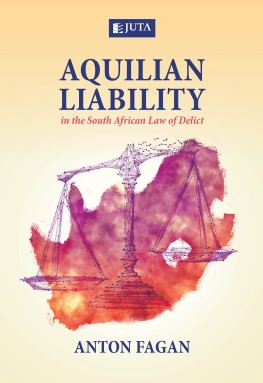
The aim of this book is to explain Aquilian liability in the South African law of delict to students encountering it for the first time. Aquilian liability is complicated. The rules determining it are to be found in the judgments of our courts, but exactly what rule a judgment created often is a difficult and controversial question. Even when the rule is easily established, it frequently is hard to figure out precisely what it means or how to apply it to a concrete set of facts.
Rather than shy away from these complexities, this book offers students a step-by-step guide through them. The book never presents students with a bald statement about what a rule is, what it means, or how to apply it. Instead, it backs up all its claims about the rules with detailed analysis of the cases. To help students come to grips with the meaning and application of the rules, the book works its way through a large number of examples, often using diagrams to facilitate better comprehension. When conflicting views about a rule exist or are possible, the book explains what they are and why one view is to be preferred.
Students who use this book will not only acquire an in-depth understanding of the rules of Aquilian liability. They will also acquire the ability to find out for themselves, and to engage in disagreement with others about, what those rules are, what they mean, and how they are to be applied.
Even though aimed primarily at students, this book will be of interest also to academics and practitioners. Not only does it provide a clear and accessible exposition of the leading cases on Aquilian liability and the rules which those cases have established, it also overturns a number of long-cherished but mistaken orthodoxies about Aquilian liability.